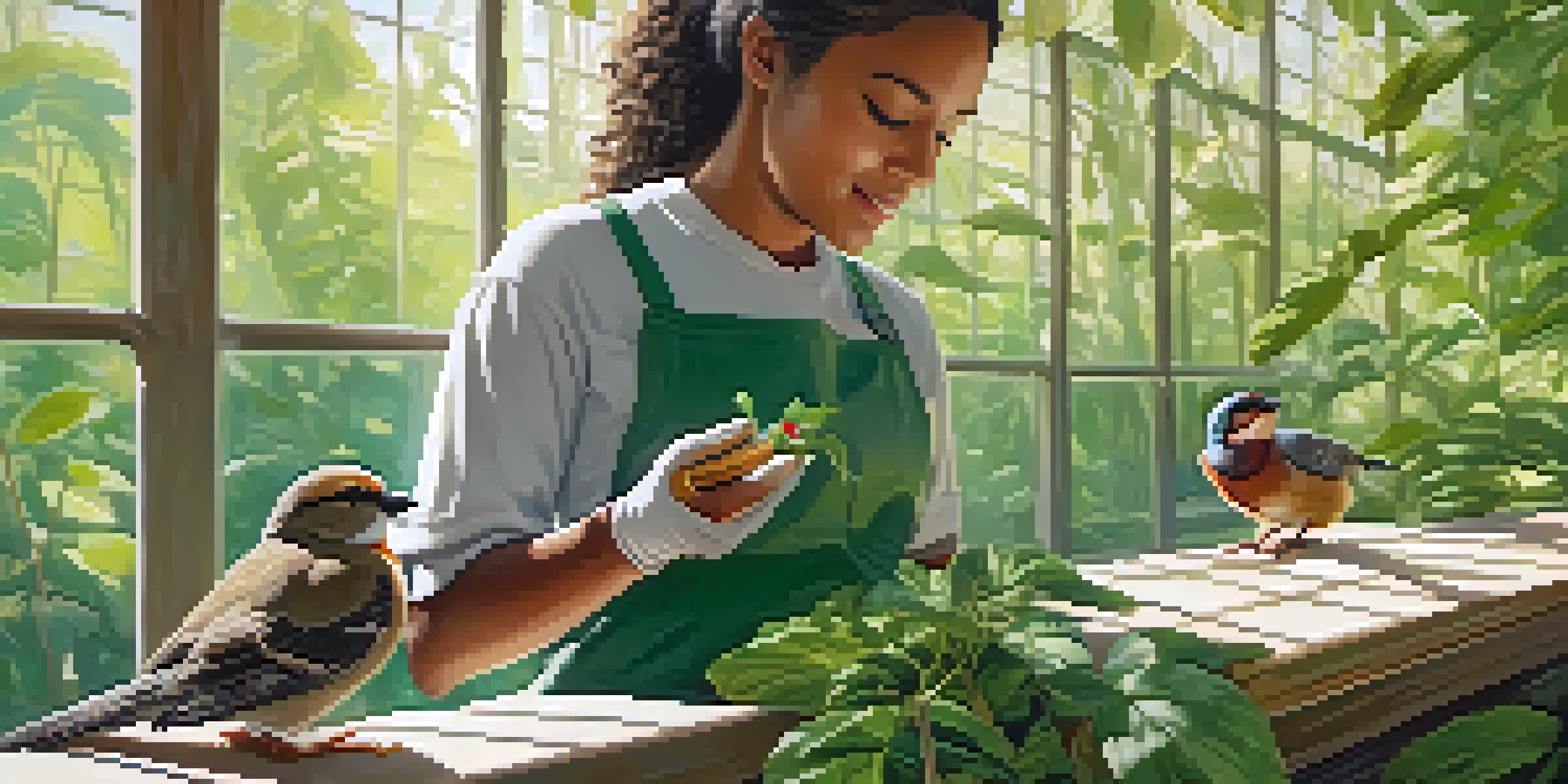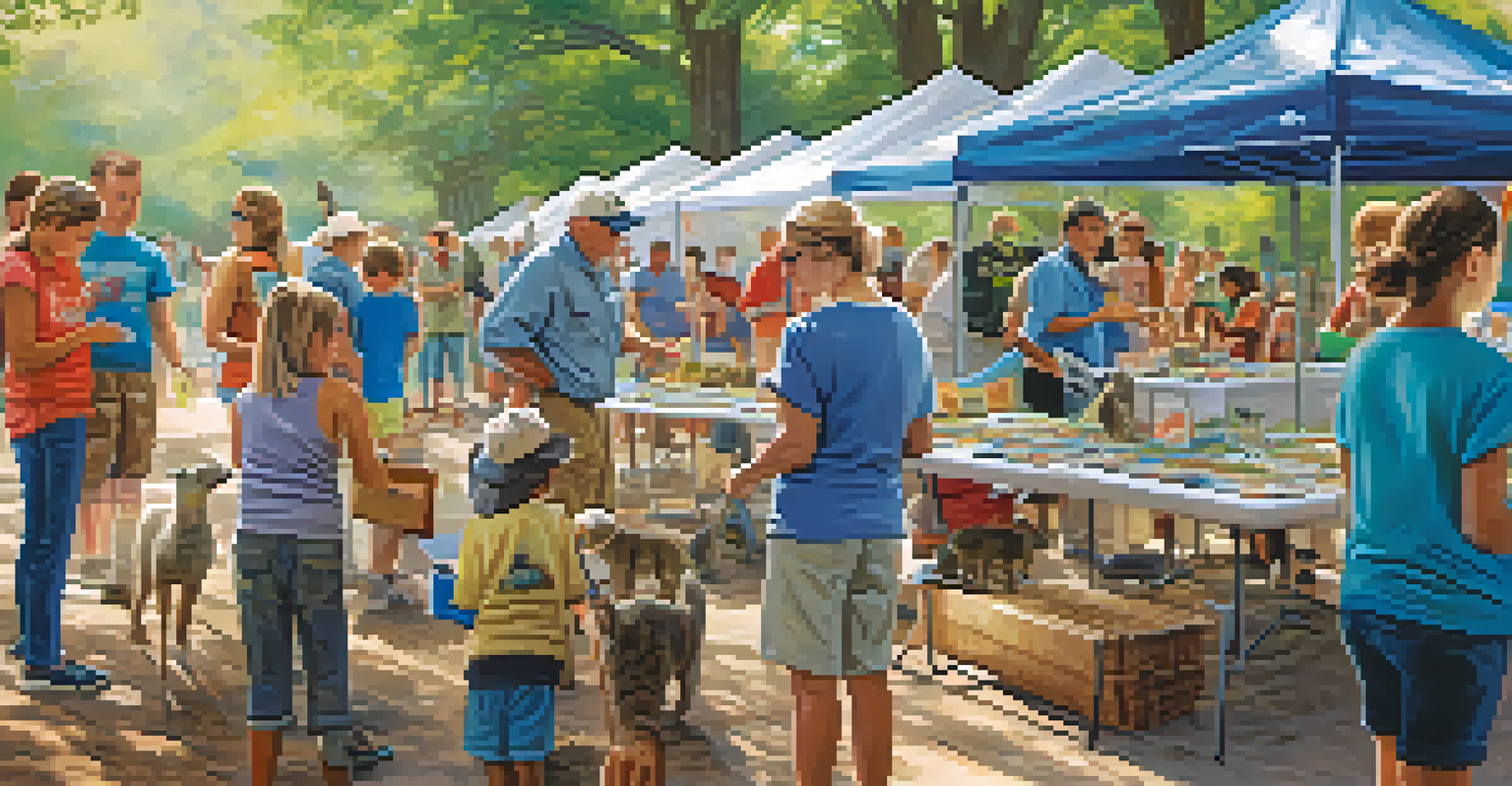The Role of Volunteers in Wildlife Rehabilitation Efforts

Understanding Wildlife Rehabilitation and Its Importance
Wildlife rehabilitation is the process of caring for injured, sick, or orphaned wild animals with the goal of returning them to their natural habitats. This vital work not only helps individual animals but also plays a crucial role in preserving biodiversity and maintaining healthy ecosystems. By providing necessary medical care and rehabilitation, wildlife rehabilitators ensure that wildlife populations can thrive.
The greatness of a nation and its moral progress can be judged by the way its animals are treated.
However, the complexity of wildlife rehabilitation requires more than just trained professionals. The collective effort of volunteers is essential to manage the numerous tasks involved, from feeding and cleaning to monitoring the animals' recovery. These dedicated individuals often work behind the scenes, ensuring that each animal receives the care it needs to heal and eventually return to the wild.
Ultimately, wildlife rehabilitation is a community effort. Volunteers bring diverse skills and experiences, enhancing the overall effectiveness of rehabilitation centers and helping to create a robust support system for wildlife conservation.
The Diverse Roles Volunteers Play in Rehabilitation Centers
Volunteers in wildlife rehabilitation centers take on various roles, each contributing uniquely to the overall mission. Some may assist with hands-on care, feeding the animals and cleaning their habitats, while others might focus on administrative tasks like data entry and fundraising. This diversity allows rehabilitation centers to operate smoothly and efficiently.

In addition to daily care, volunteers often help with public education initiatives. They share their knowledge about wildlife and conservation with the community, fostering a greater appreciation for the natural world. By engaging with visitors and schools, volunteers play a pivotal role in raising awareness about the challenges wildlife face.
Volunteers Are Essential for Rehab
The collective effort of volunteers is crucial in wildlife rehabilitation, as they provide hands-on care and support essential for the recovery of injured or orphaned animals.
Moreover, volunteers bring fresh energy and enthusiasm, which can be infectious. Their passion for wildlife rehabilitation often inspires others to get involved, creating a ripple effect that expands community support for conservation efforts.
Training and Skills Development for Volunteers
Many wildlife rehabilitation centers offer training programs for volunteers, ensuring they have the necessary skills and knowledge to provide effective care. These programs typically cover topics such as animal behavior, basic first aid, and species-specific needs, enabling volunteers to feel confident in their roles. This hands-on training is invaluable for both the animals and the volunteers themselves.
Wildlife conservation is not just about saving animals; it's about protecting the whole ecosystem and the health of our planet.
Volunteering in wildlife rehabilitation also presents opportunities for personal growth. Participants often develop skills in teamwork, communication, and problem-solving, which are beneficial in any career path. Additionally, volunteers gain a deeper understanding of wildlife conservation and the challenges faced by various species.
Ultimately, these training programs not only equip volunteers to help animals but also foster a sense of community and belonging among individuals who share a passion for wildlife. This connection can lead to lifelong friendships and a committed network of conservation advocates.
Challenges Faced by Wildlife Rehabilitation Volunteers
While volunteering in wildlife rehabilitation can be rewarding, it also comes with its own set of challenges. One significant hurdle is the emotional toll of caring for injured or orphaned animals. Volunteers often form bonds with the animals they help, making it difficult when an animal does not recover or needs to be euthanized.
Additionally, the physical demands of the work can be taxing. Volunteers may spend long hours performing labor-intensive tasks, such as lifting heavy cages or cleaning enclosures. It's crucial for volunteers to maintain their own well-being and seek support when needed, as burnout can be a real concern.
Training Enhances Volunteer Impact
Training programs for volunteers not only equip them with necessary skills but also foster personal growth and community connections among wildlife advocates.
Despite these challenges, the rewards often outweigh the difficulties. Volunteers frequently describe the profound satisfaction that comes from making a difference in the lives of animals, knowing they are part of a larger mission to protect wildlife.
The Impact of Volunteer Efforts on Wildlife Conservation
The contributions of volunteers extend far beyond the walls of rehabilitation centers; they play a significant role in broader wildlife conservation efforts. By rehabilitating injured animals and releasing them back into the wild, volunteers help maintain healthy populations and ecosystems. Each animal saved is a step toward preserving biodiversity.
Moreover, the educational outreach done by volunteers helps to bridge the gap between humans and wildlife. By sharing their experiences and knowledge, they encourage others to be more mindful of their interactions with nature. This fosters a culture of respect and responsibility towards wildlife conservation.
In essence, the work of volunteers is integral to a larger narrative about wildlife preservation. Their dedication not only helps individual animals but also creates a ripple effect that can influence policy changes and community attitudes towards conservation.
Building Community Through Wildlife Rehabilitation
Wildlife rehabilitation centers often serve as hubs for community engagement and activism. Volunteers come together to share their passion for wildlife and learn from one another. This sense of camaraderie fosters a supportive environment where individuals can exchange ideas and experiences, ultimately strengthening the community.
Events such as fundraisers, workshops, and open houses provide opportunities for volunteers to connect with the public. These gatherings not only raise essential funds for the center but also educate the community about local wildlife and conservation efforts. As volunteers share their stories, they inspire others to take action and become advocates for wildlife.
Community Engagement Boosts Conservation
Wildlife rehabilitation centers serve as community hubs, where volunteer efforts raise awareness and inspire collective action towards wildlife conservation.
Through these connections, volunteers often build lasting friendships and networks that extend beyond their time at the rehabilitation center. This sense of community is vital for sustaining long-term conservation efforts and ensuring ongoing support for wildlife rehabilitation.
How to Get Involved in Wildlife Rehabilitation
If you're inspired to contribute to wildlife rehabilitation, there are many ways to get involved. Start by researching local wildlife rehabilitation centers and checking their websites for volunteer opportunities. Many centers offer orientation sessions to introduce potential volunteers to their mission and the various roles available.
Consider what skills you can bring to the table, whether it's hands-on care, administrative support, or public outreach. Even if you have limited experience with wildlife, there are often training programs available to help you develop the necessary skills. Your passion and willingness to learn can make a significant difference.

Finally, remember that your involvement can extend beyond volunteering. Supporting wildlife rehabilitation through donations, attending events, or spreading the word on social media can also help raise awareness and resources for these vital efforts. Every action counts in the fight for wildlife conservation.